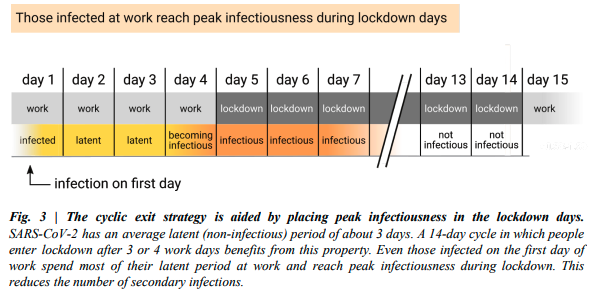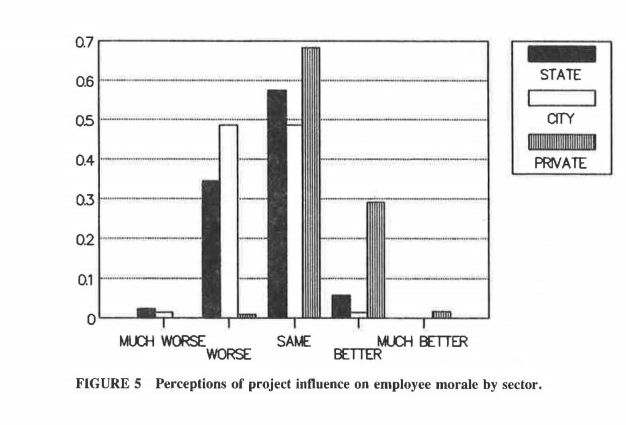Interesting studies examine two frameworks that could help prevent further infections.
We can’t just click our fingers and have our workplaces running like normal again. The transition back to the physical workplace will be slow and full of trial and error.
Following the announcement of the government’s three step ‘roadmap to recovery’ plan (a more comprehensive return to the workplace for all industries is part of the final stage), organisations have begun to get more serious about structuring the work week to ensure the return to the physical workplace is as safe as possible.
Below, HRM looks at two interesting pieces of research. One highlights some pitfalls around a fairly common return-to-work plan, and the other proposes a fresh approach that could help prevent the virus from spreading.
Structuring days to prevent outbreaks
The biggest concern about returning to work and opening the economy back up is that we’ll undo all the good work we’ve done over the last few months.
The virus is still very new, and there are a lot of unknowns about how it spreads. Based on existing knowledge, when an individual is exposed to COVID-19, experts suggest the average time before they become infectious (the incubation period) is between 3 and 5 days, although it can be up to 14 days and some people can still be infectious during incubation.
Researchers from the Weizmann Institute of Science in Israel have recently released a paper on exit strategies from a lockdown, which outlines a return-to-work model that might help prevent the spread of the virus. Essentially, it suggests employees spend four days in the workplace followed by ten days at home. The idea is you’d then repeated the pattern.
The idea is that if someone is exposed to the virus while at work (or on their way to work) their symptoms will present during the ten days at home. This means that during their most infectious period, they are not presenting a risk to the rest of the workforce.
This model comprises two approaches. The first is what they call the ‘anti-phasing effect’. That is “exploiting the virus latent period” to use the biology of the virus against itself. The second is the general restriction on interactions it creates.
The researchers found that if workplaces adapted this model, the number of people that each infected person would pass the virus onto could drop to below one.
“When [the reproduction number] is below one, the number of infected people declines exponentially, [it’s] a basic principle of epidemiology,” they write.

“The idea is that people will work in two-week cycles,” Ron Milo, one of the researchers, said in an article with Fast Company. “This will significantly decrease the number of cases resulting from each infection and thus gives a feasible strategy for a return to economic activity that can prevent a second wave of COVID-19.”
Four days would be “a conservative starting point”, says Milo. The idea is that as the infection rates lower, the days in the office could increase. While this model would be most effective in countries with higher positive cases, like the UK and US, Australian workplace could still trial a model like this if they wanted to err on the side of caution.
The researchers clarify that this framework should only be implemented when a country’s healthcare system is prepared for a high number of critical cases, and that it should play out alongside strict social distancing and personal hygiene measures.
Staggered starts should be voluntary
Another key concern for both employers and employees is getting back onto public transport when trains, buses and trams start to fill up with commuters again. As HRM has previously reported, there are plenty of reasons for this to cause some anxieties, despite the ramping up of cleaning efforts.
To get around this, many organisations are tossing up the idea of having staggered starts to the day – for example, half the workforce might work from 9-5 while the other half works from 10-6. The goal being to minimise peak hour crowds on public transport. While this seems like an effective fix, it’s not foolproof.
Commenting on the topic in AHRI’s member-exclusive group on LinkedIn, Rod Francisco executive director, people at Mackay Hospital and Health Service, made an interesting point.
“Regardless of the public transport issue, the staggering of working hours has many complications both in (core hours) and out (school hours) of the workplace. The broader issue of flexible working also needs to be matched with infrastructure changes that encourage and support such initiatives without neglecting those for whom it is not possible or not desired.”
Staggered starts might not work for parents who need to be at the school gate at 3:30 to pick up their kids, unless they opted for a much earlier start to the day, but that could then interfere with the school drop off in the morning.
An experiment from 1988 aimed at easing early morning traffic congestion looked into this issue, and found downfalls to the staggered hours approach.
Over four weeks, 3,500 of the 7,100 employees working in the Civic Centre of Honolulu, Hawaii started work 45 minutes later than usual. Participants consisted of public (state and county) sector employees and private sector employees.
The researchers found that while staggered starts proved to have slight positive impacts on traffic conditions (participants shaved 3-4 minutes off the average 45 minute commute), there were negative impacts on their ‘non-work-related tasks’.
Arranging for childcare and school activities was reported to be an issue. Sixty-three per cent of participants felt staggered start times disrupted them from personal business and 56 per cent said it made scheduling social activities challenging.
The researchers hypothesised this could be due to the temporary nature of the experiment and suggest that if staggered starts were implemented as a long-term policy these wrinkles could be ironed out.
The most common problems managers cited during this experiment were coordinating interdepartmental work (21 per cent), making contacts with mainland offices (21 per cent), scheduling work assignments (17 per cent), and communicating with employees (16 per cent).
The researchers asked managers to rate the overall performance of staff during the experiment. Private sector employees maintained the same level of performance, but public sector managers were more likely to report the same or worse performance levels in staff.
The public sector employees reported more negative impacts on their non-work-related obligations (social life, childcare etc.) than their private sector counterparts. The researchers suggest the former’s overall dissatisfaction could be due to the mandatory nature of their staggered hours (private sector employees were able to opt in).
The experiment also had a more positive impact on private sector employee morale, as compared to public sector staff. Most reported either the same or better staff morale during the project whereas over half of city county managers (public) and 37 per cent of state managers (also public) reported worse or much worse morale levels.

“Any consideration of implementing a permanent staggered work hours program requires an assessment of employee attitudes toward such a proposal,” the researchers wrote.
“All sectors and participants, as well as nonparticipants, were opposed to mandatory alternatives of staggered work hours… voluntary staggered work hours alternatives were perceived positively by employee participants and nonparticipants.”
In general, participants reported preferring earlier starts. While this will differ from workplace to workplace, gathering information like this before could mean the difference between a staggered start policy working or not.
For those considering a staggered start policy, the researchers suggest looking at the bigger picture first of all. For example, are there any current workplace policies that could be deemed unfair in a staggered start environment, such as ‘first in first served’ parking or a history of early morning company meetings?
“The project demonstrated that staggered work hours can help alleviate traffic congestion. However, impacts are not uniform; some commuters will save time, but others will not. Impacts on the transportation system are sufficiently small that they could easily be eroded by latent-demand-related travel shifts, whereas impacts on the individual may be significant,” the researchers conclude.
Has your company proposed a schedule plan for returning to work? If so, we want to hear about it. Share your thoughts in the comment section below.
Having a mentally healthy workplace is a top priority for all businesses right now. AHRI’s virtual, half-day course, Mindfulness – mental health at work will provide participants with the skills and information to manage stress and anxiety at work.


We are planning a gradual and phased return to the work place starting with 2 days per week for 3 weeks followed by a review. If all goes well, we will increase to 3 days per week for a further 3 weeks followed by another review. In addition, staff are encourage to avoid public transport during peak times by working taggered working hours.
We are implementing an office use opt-in schedule. Those who are comfortable traveling in have opted-in with a request of number of days. Teams have been grouped and schedule derived to maintain physical distancing and adhere to 4m2 rule. We are encouraging all to stagger their start and end times, but this is being developed within each team as to what works. We are fortunate to be in an industry where this is possible and the flexibility is viable. We are remaining optional use until end 2020. We are not planning a full-time return until Feb 2021.
[…] controls – The continued implementation of physical distancing through varied office fit outs, modified start and finish times, avoiding overcrowding in shared spaces, mask wearing in appropriate circumstances and providing […]
[…] will take. Will all employees return to regular hours at once, or will there be a staged approach? This article provides an overview on two possible frameworks: 4 days on followed by 10 days off, and […]